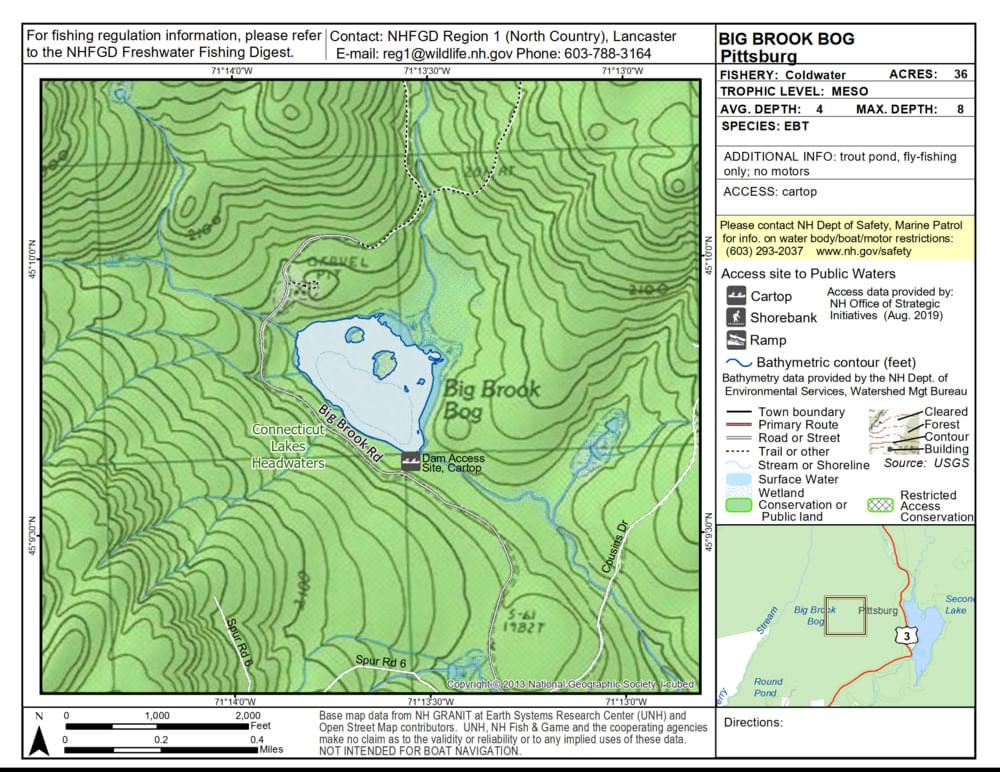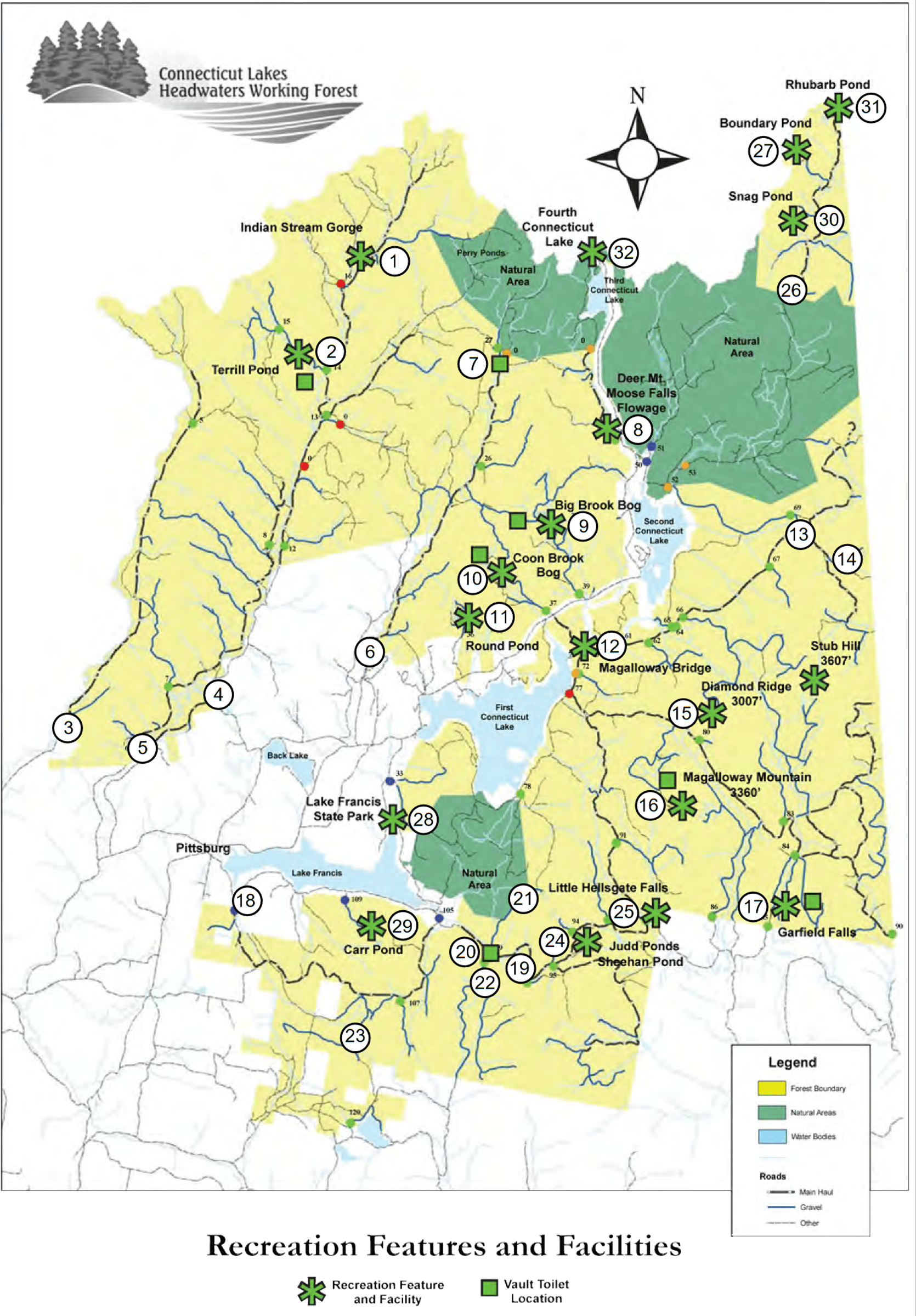Big Brook Bog, Pittsburg
Big Brook Bog, Pittsburg
Pittsburg, New Hampshire 03592
White Mountain National Forest Official WebsiteConnecticut Lakes Headwaters Working Forest Official Website
Connecticut Lakes State Forest map
About this Location
Big Brook Bog is a wetland that covers an area of about 200 acres. The bog is fed by Big Brook, a tributary of the Connecticut River. The bog is a valuable habitat for wildlife, such as moose, beavers, otters, herons, ducks, and frogs The bog is accessible by a hiking trail that offers views of the wetland and the surrounding landscape.
Big Brook Bog, on Big Brook Bog Road, has canoe launch access at the dam.
About White Mountain National Forest
See all hotspots at White Mountain National Forest
In the decades prior to 1911, the unregulated logging practices of private timber companies in the White Mountains had resulted in a damaged landscape susceptible to both fire and flood. Fires had burned thousands of acres, and flash floods affected the water power necessary to the mills of major industrial centers downstream, such as Manchester, New Hampshire, and Lowell, Massachusetts. Concerns over losses to industry, business, and tourism, and the growing conservation movement led to citizen action. The Appalachian Mountain Club (AMC) and Society for Protection of New Hampshire Forests (SPNHF) spearheaded an effort to ensure the permanent protection of the White Mountains from further depredation. After years of lobbying and intense public pressure, Senator John Weeks of Massachusetts, a native of Lancaster, New Hampshire, introduced legislation that became known as the Weeks Act. The Weeks Act was passed by Congress in 1911, appropriating 9 million dollars to purchase 6 million acres of land in the Eastern U.S. In turn, this led to the creation of the White Mountain National Forest (WMNF) in 1918, and twenty-one other national forests throughout the north and southeast. Many of the groups who were instrumental in the passage of the Weeks Act, including the SPNHF and the AMC, are still active today, and the WMNF has grown from 7,000 acres to almost 800,000. Today, the reforested mountains and hillsides supply forest products and provide magnificent recreational opportunities while maintaining healthy watersheds and ecosystems.
About Connecticut Lakes Headwaters Working Forest
See all hotspots at Connecticut Lakes Headwaters Working Forest
The Connecticut Lakes Headwaters Working Forest Recreation Program, managed by the State of New Hampshire in cooperation with The Forestland Group, provides high-quality recreational opportunities that are consistent with a Forest Legacy Easement held by the State of New Hampshire. The property, owned by The Forestland Group, is a working forest and care should be taken on the roads and in the forest.
Features
Restrooms on site
Wheelchair accessible trail
Entrance fee
Content from White Mountain National Forest Official Website and Connecticut Lakes Headwaters Working Forest Official Website
Last updated November 17, 2023

